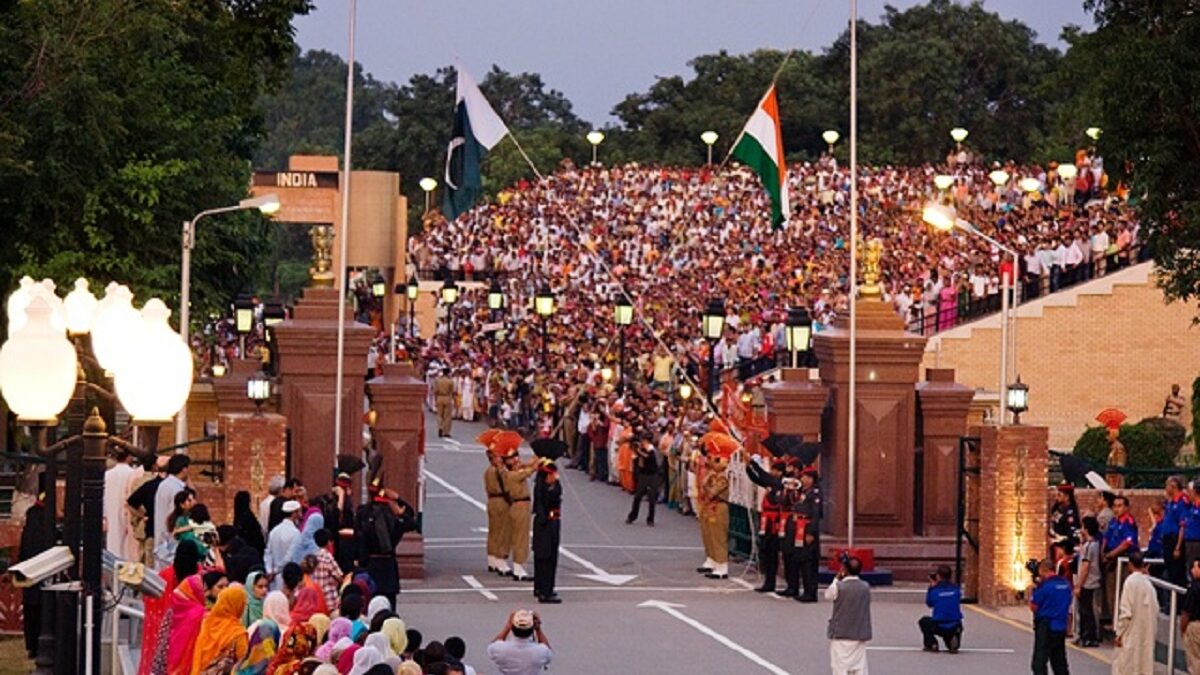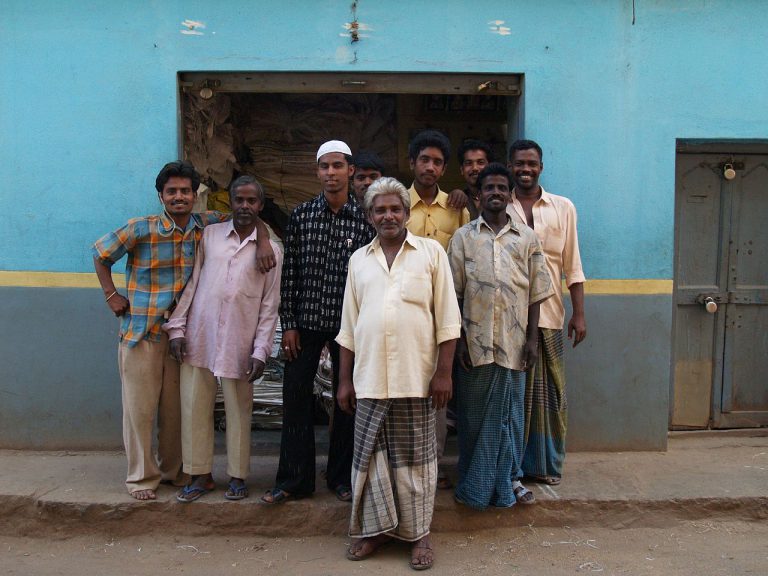Silent Waters: Religion, Gender and Nationality during Partition
Undergraduate Student at Jindal Global Law School
Through this piece, I discuss the concerns raised by the globally acclaimed film Khamosh Pani (2003) with a larger conversation about the gendered nature of religious conflict during the instability of the 1947 Partition of British India into India and Pakistan. Sabiha Sumar’s film is set in a small village in Pakistan’s Punjab in 1979 which involves the after-effects of the division of British India. The divide and rule policy by the British is seen to be the reason for the bloodbath that followed but in reality it was the paradoxes and structural peculiarities of Indian society and politics in late colonial India (Bose and Jalal 165). The division was based on religious lines and had serious repercussions with gangs set entire villages on fire, slashing to death adults, children, and the elderly while abducting young women to be raped (Bhardwaj 20).
Partition was known as a defining moment which influences how the peoples and states of postcolonial South Asia envisage their past, present and future. In pre-partition Punjab, men pillaged and murdered ruthlessly, while women had to contend with danger from both their own families and marauders from the other side. Women were much safer with strangers than those who feared they were dishonouring their name. It seemed like partition brought a sense of loss of ‘home’ among those who were forced to move and migrate to other places to feel safer as their hometowns were filled with people who would kill for religion.
Khamosh Pani focuses on the violence endured by women post partition through the character of Ayesha wherein gender is a major theme in the memory of partition. In the beginning of the movie, Ayesha strikes us as a simple woman who is known and liked by a lot of people but as the movie progresses we see flashbacks of her trauma which makes the viewers question not just her past but the past of all women who suffered the ill effects of the Partition. Rapes and abductions were prevalent at the time, prompting family members, primarily men, to kill women in order to prevent them from going through something similar since it would jeopardise their ‘dignity’ in society if they did. If they managed to avoid murder at the hands of the family patriarchs, men from the opposing religion went after them, with the idea that nothing would humiliate the enemy more than dishonouring his women.
Similar instances are depicted in the movie wherein a flashback reveals Ayesha narrating how girls were being killed to save amongst which some were saved while some weren’t. Ayesha’s story exemplifies the trauma at the site of the nation and her loss operates on several levels, but most pertinently she has been separated from her Sikh past. When her brother comes looking for her to take her home to visit her dying father, she refuses because it was her father and other men in the community who pressured her to kill herself, to pre-empt her from imminent rape (Shahnaz 135). She is disturbed by the fact that it was because she was abandoned by her own family and survived by converting to Islam. Due to her brother’s presence, her son learns that she was born a Sikh, which leads to her being viewed as an outcast, who has been turned into a staunch fundamentalist and can’t accept that she is the brother of an unbeliever. This demonstrates the prejudice that existed amongst religious communities as well as the bias present in a patriarchal society.
Pre-partition women were subjected to notions of chastity, family honor which instilled fear and led them to rebuild their lives despite hardships in search of a new identity. Women were subjected to concepts of chastity and family honor prior to partition, which generated fear and drove them to rebuild their lives despite hardships in quest of a new identity (Bhardwaj and Datta 2231). Likewise Ayesha finds a new sense of self after escaping death. The instances in the movie highlight that Ayesha never goes to fill water at the well and a flashback reveals that a well was the very place she escaped death from as a Sikh. Urvashi Butalia gives an account on how several women including small children were killed to protect the same ‘honour’ (Butalia 200). The patriarchal framework of society denied women chances and placed safeguarding honour as her obligation, particularly in the case of violence, which is not her fault, yet society still insists that if a woman is raped, it is on her. The trauma of escaping suicide follows Ayesha around and when she’s treated as an outcast, she feels as if there is no other option but to kill herself.
The film also brings in the concept of Nationalism which implies the identification with one’s own nation for its interests. Muslim social identities in late-nineteenth-century India remained fractured by class, region and the rural–urban divide while traditional Nationalists have blamed the British policy of divide and rule for the creation of a separate nation. The two nation theory suggests that Indian Muslims and Hindus are two distinct nations with distinct customs, religions, and traditions (Jalal and Bose 165). Despite being from one nation, the two communities were so different that they required a divide of British India. The spirit of togetherness was missing between the two which led to increased conflict.
One of the key causes of the separation was religion. The movie brings out the barriers created by religion. The idea of partition dates back to 1887, when Sir Syed Ahmad Khan, the founder of the Aligarh Muslim University, declared that Hindus and Muslims belonged to two separate countries. The two religions were known to have different beliefs and were not tolerant towards each other. In the movie, Muslim fundamentalists who believed they knew what Allah wanted, incited violence against those who wouldn’t follow them. They forced others to believe in what they thought were Allah’s teachings. For instance in the movie, at a mosque they taught others that ‘the voice of Muslims must be one’. It is these kinds of extreme thoughts that act as seeds of conflict between Muslims and Hindus.
Another instance is when a child asked Ayesha whether heaven is only for Muslims and she replied saying that heaven is for whoever does something good. Upon hearing this, the Muslim fundamentalists were offended and left because they held extremely conservative views of Islam wherein they believe other religions have failed. The differences between the two religions were so grave wherein if they continued to exist as a nation it would lead to the destruction of India. Ayesha also told her son that she prays, but it doesn’t mean she doesn’t think, implying that trust in God does not indicate fanaticism or hatred of other religions. Till this day, there exists hate, distrust and mutual hostilities between India and Pakistan (Ashraf and Shah 17).
The presence of a patriarchal society is a consistent theme in the film. According to feminist theory, women have been oppressed based on the fact that they are female which is also depicted in the movie. The rules of behavior are different for men and women. For instance when the feudal lord throws a party where a young female dancer entertains an all-male audience while having alcohol. These acts are against Islam but are considered fine then however Ayesha is seen as a threat to society (Ashraf and Shah 19). Gender inequality is seen through instances of domestic labour which women were subjected to, for example, washing clothes, cleaning, cooking. Intersectionality refers to how a person’s social and political circumstances influence both their privilege and discrimination. Some women endure discrimination for a variety of reasons, including religion, nationality, race, class, etc. Similarly, Ayesha faced prejudice through her religion, nationality as well as gender. Ayesha changed her identity because she didn’t choose suicide to protect her family’s ‘honour ‘and then her converted religion didn’t consider her a ‘believer’.Sumar uses the platform of this film to highlight the prevalence of violence against women, particularly in South Asia, and the fact that the causes are complex and interconnected, as witnessed in the village. Ayesha is caught between toxic masculinities whose game of hatred leaves little space to make a choice free of the shackles of patriarchy, much less radicalism and religious nationalism (Ashraf and Shah 22).
The movie ends with Ayesha dying by jumping into a well which is the very fate she ran away from. The shot portrays Ayesha from behind, obscuring her individuality and highlighting the fact that she is just one of many women who have suffered as a result of the Indian subcontinent’s spatial split. It seems as if women were bound to go through this back then. Khamosh Pani doesn’t just represent a patriarchal society but also underpins the need for a tolerant Islam (Ashraf and Shah 19). The presence of trauma can be seen in the lives of women through Ayesha where the political context of Partition has created patterns of gendered violence.
References
- Sugata Bose, and Ayesha Jalal. Modern South Asia : History, Culture, Political Economy. 4th ed., Routledge, 2017, p. 165-180.
- Urvashi Butalia. The Other Side of Silence : Voices from the Partition of India. Durham.
- Datta, Anjali Bhardwaj. “Gendering Oral History of Partition: Interrogating Patriarchy.” Economic and Political Weekly, vol. 41, no. 22, 2006, pp. 2229–35.
- Khan, Shahnaz. “Floating on Silent Waters: Religion, Nationalism, and Dislocated Women in Khamosh Pani.” Meridians, vol. 9, no. 2, 2009, pp. 130–52.Jan, F., S. I. Ashraf, and S. F. A. Shah.
- “Khamosh Pani: Partition Trauma, Gender Violence, and Religious Extremism in Pakistan”. Liberal Arts and Social Sciences International Journal (LASSIJ), vol. 5, no. 1, Apr. 2021, pp. 16-27.








